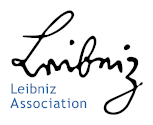- The Institute
- Research
- Dictatorships in the 20th Century
- Democracies and their Historical Self-Perceptions
- Transformations in Most Recent History
- International and Transnational Relations
- Edited Source Collections
- Dissertation Projects
- Completed Projects
- Dokumentation Obersalzberg
- Center for Holocaust Studies
- Berlin Center for Cold War Studies
- Publications
- Vierteljahrshefte
- The Archives
- Library
- Center for Holocaust Studies
- News
- Dates
- Press
- Recent Publications
- News from the Institute
- Topics
- Munich 1972
- Confronting Decline
- Feminist, Pacifist, Provocateur
- Der Mauerbau als Audiowalk
- Digital Contemporary History
- Transportation in Germany
- Envisaged Futures at the End of the Cold War
- From the Reichsbank to the Bundesbank
- German Federal Chancellery
- History of Sustainabilities: Discourses and Practices since the 1970s
- Changing Work
- Democratic Culture and the Nazi Past
- The History of the Treuhandanstalt
- Foreign Policy Documentation (AAPD)
- Dokumentation Obersalzberg
- Hitler, Mein Kampf. A Critical Edition
- "Man hört, man spricht"
- IfZ
- The Edition VEJ
- Editorial Prefaces & Format of...
The Edition VEJ | News | Volumes of the VEJ | The English Edition PMJ | PMJ Volumes | Contributors | The Sources Speak
Geography & Chronology | Sources & Perspectives | Project Preparation | Method of Citation
Editorial Prefaces & Format of the Documents and Volumes
The edited documents are formatted as follows: Document title, header, document, notes. The document title as phrased by the editors provides readers with a rapid sense of the date, author, addressees, and the main ideas of each source. The technical information line below that is part of the document and contains, in accordance with fixed guidelines, information on the source type, author, place of origin, notes on processing and confidentiality, and other special features, addressees, and the date. That is followed by the source text, usually in its full form. There are a few exceptions, in which only parts of the documents are provided. In such cases, omissions are marked and short summaries of the missing segments are provided in the footnotes. All foreign-language documents are translated into the language of the edition, i.e. German (VEJ) or English (PMJ). The authors’ emphases are maintained and provided in italics throughout. While the document titles, footnotes, and translated documents follow today’s German spelling conventions in the VEJ, original German documents maintain their original spellings. Typographical errors and other minor errors as well as peculiar spellings that reflect typewriter limitations are simply corrected and spelling inconsistencies within a single document are eliminated. If, however, particular peculiarities of spelling and grammar are characteristic of a source, a footnote is added to indicate that the “grammar and spelling are as in the original”.
The annotations provide background information on the document, on those people who are featured in the document, and on the respective historical contexts, while calling attention to broader connections as well as any clearly false representations of fact.
The introduction provides an overview of the events depicted in the volume and place it within the overall historical context of the Nazi persecution of Jews. Information is also given on the thematic areas of focus, contexts specific to the regions involved, and the current state of research on the topic.
The extensive appendix includes additional information to help navigate the volumes. A systematic document index with key words refers to the reader to the relevant documents. Indices of institutions, people, and places allow for more specific searches. Lists of abbreviations and the archives referenced in the volumes are also included in the appendix. Volumes that document events that occurred in different countries include a chronology as well.
Maps provide an additional point of orientation to find the places and camps mentioned in the volume.



